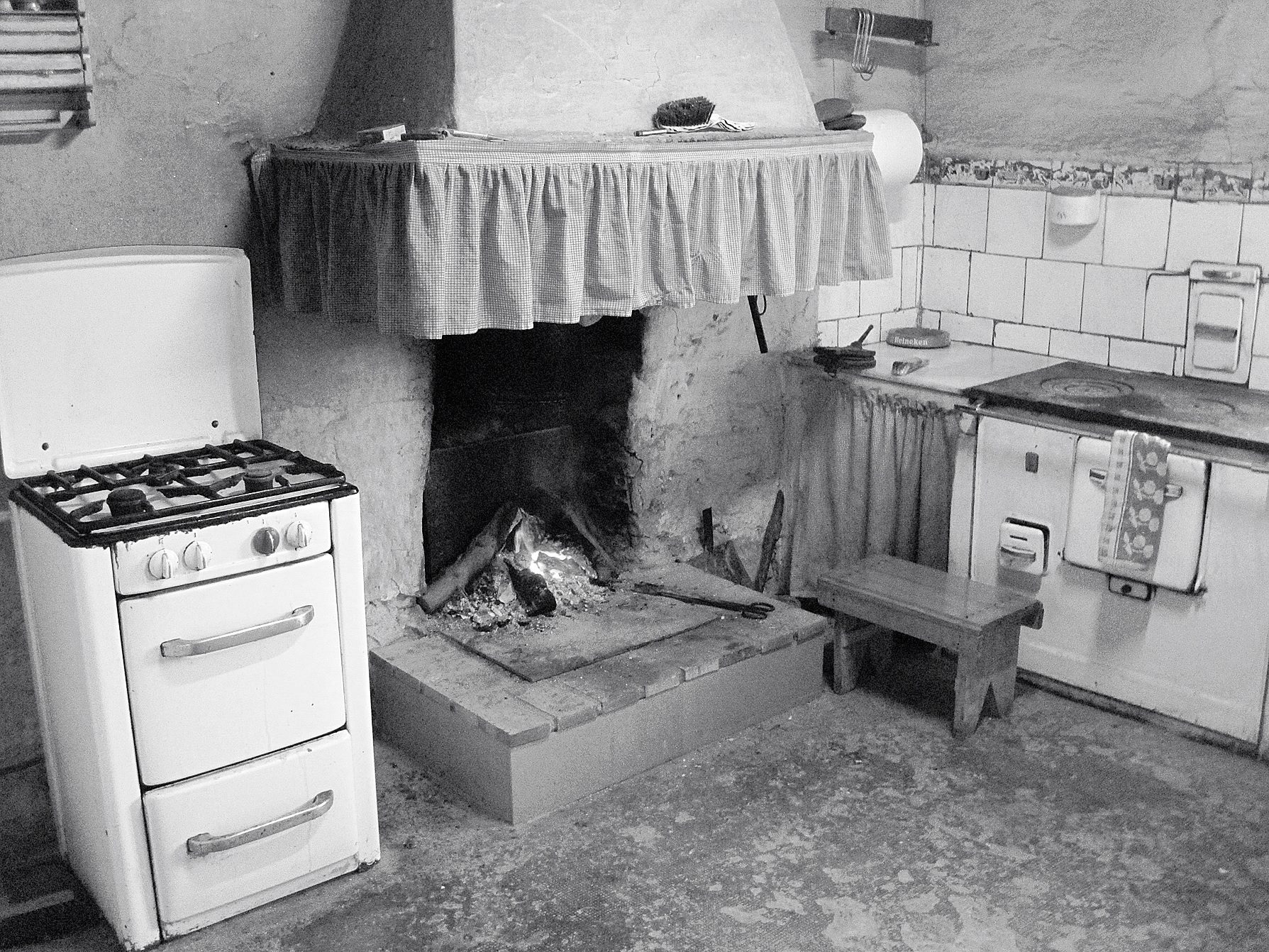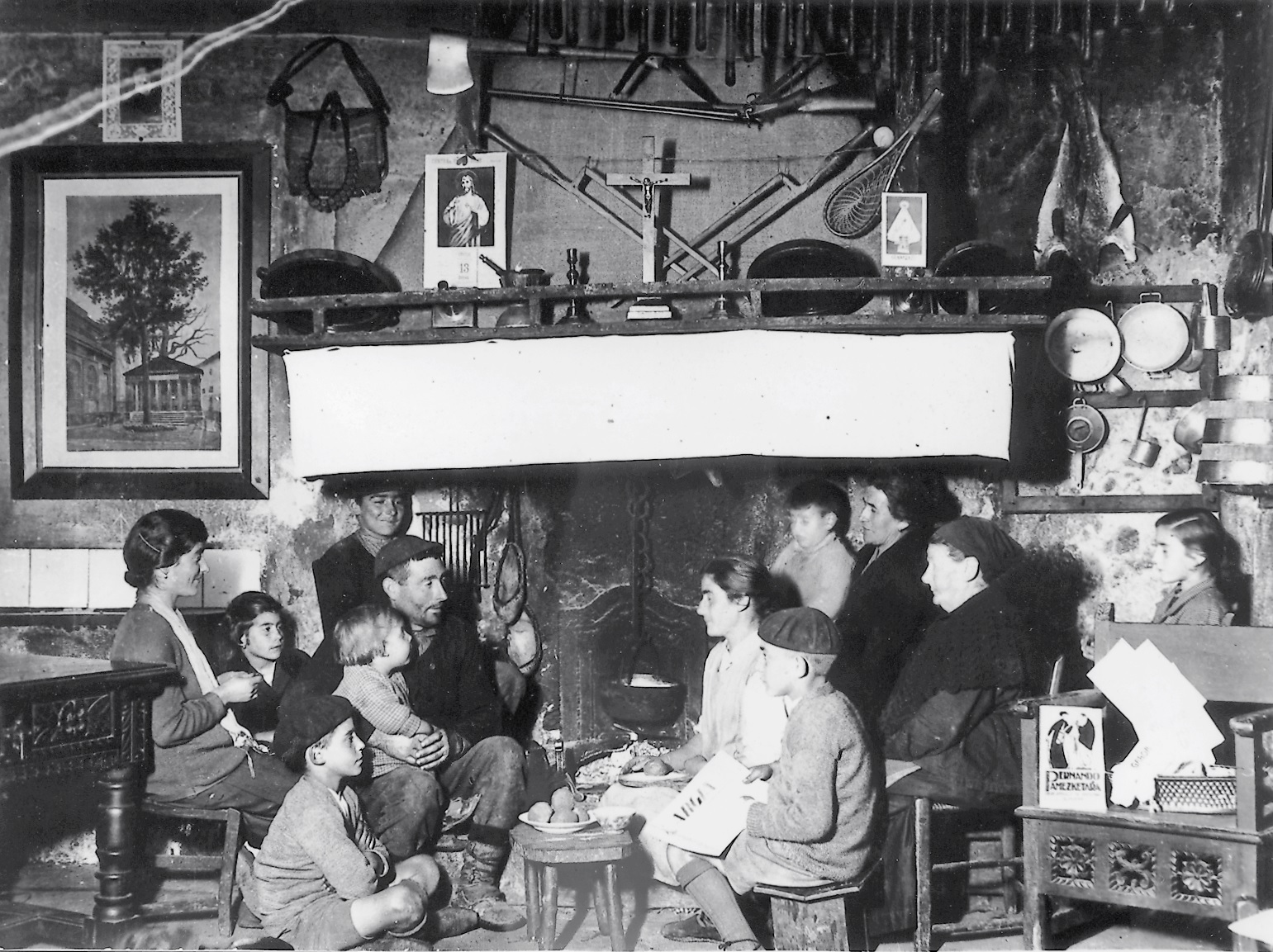Archives

Hearth, stove and butane gas cooker in a Muxika (Bizkaia) farmhouse. Segundo Oar-Arteta. Labayru Fundazioa Photographic Archive.
The structural components of the traditional house, roof, walls, doors and windows, served to protect the fire of the hearth. The fireplace was an integral part of the home, its central and most important feature. The idea of a house without a hearth, where the household sought shelter, was simply out of the question. The wind was nature’s most feared element. Strong winds were a great threat, for a spark from the hearth could spread to the wooden structure of the house and consume it. (more…)

Picture from Aguirre Photographic Archive included in House and Family in the Basque Country.
When we talk about ethnography and oral transmission, it is almost inevitable to visualise an old-time family gathered around a fireplace and grandparents relating stories or folktales to an attentive child audience.
Time goes by, and the precious fire is stored within a heavy cast iron frame called kitchen stove, or simply stove, but the transmission process remains unchanged. Rural culture is gradually replaced by a predominantly urban society, the fireplace rapidly recedes in importance within the house, and the living room takes hold as a space in its own right. There we find our family, reduced in members now and totally absorbed by moving pictures, as fascinating as the fireplace flames of olden times, coming from a television set, the new storyteller. (more…)

